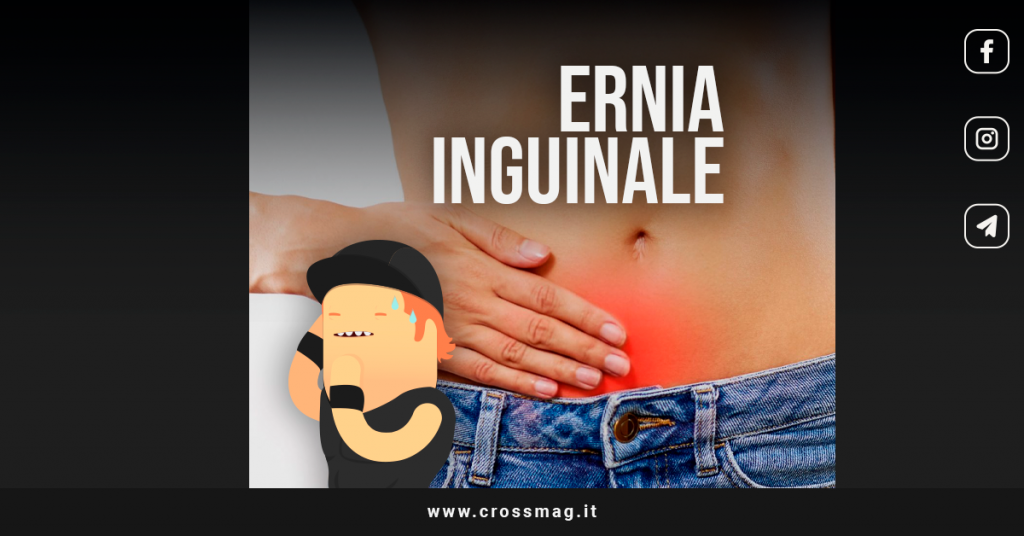Inguinal hernia is a type of hernia that occurs in the abdomen close to the groin area; it develops when fatty or intestinal tissues push through a more fragile part of the abdominal wall, near the right or left inguinal canal.
A hernia in this area results in an annoying protruding bulge, which can become painful during movement, but does not always create discomfort; Is sport compatible with inguinal hernia?
Let's find out together!
Index
Symptoms
Inguinal hernias provoke swellings along the pubic / groin area that may increase in volume with certain movements and actions; among the symptoms related to this type of hernia we can have:
- Pain when coughing or moving
- Burning sensation
- Sharp pain
- Feeling of heaviness in the groin
- Swelling in the scrotum for men
Causes and risk factors
There is no specific cause for this type of hernia; however, the weaker parts of the abdominal and inguinal wall are a determining risk factor.
Extra pressure on these parts of the body could trigger a hernia; other common risk factors include:
- Heredity
- Previous episodes of inguinal hernia
- Male sex
- Premature birth
- Overweight and obesity
- Pregnancy
- Cystic fibrosis
- Chronic cough
- Chronic constipation
If you suspect that you have an inguinal hernia, contact your doctor immediately who will be able to advise you on the tests to perform and the correct medical treatment.
An untreated hernia can remain "strangled" or "strangled"; this occurs when the contents of the hernia become trapped in the abdominal wall.
If the doctor is unable to reposition it correctly, a bowel obstruction can occur which can cause vomiting and abdominal pain.
Is sport compatible with inguinal hernia?
Who suffers from inguinal hernia the possibility of doing sports should not be precluded, certainly with due care.
Intense sports such as weightlifting and running are banned, but swimming and biking can be practiced as they stress the groin area to a lesser extent.
The main rule to follow is that you must stop at the slightest sensation of discomfort or pain; sport is compatible with inguinal hernia only after receiving the ok from your doctor, but you must not go to further inflame the area.
Sport Hernia: the inguinal hernia of the sportsman
Inguinal hernia is, unfortunately, very common among sportsmen; physical exertion caused by very intense activities as an endurance sport it can in fact cause the adipose tissue to protrude from the abdominal wall.
Among the activities most at risk for this complication are sports that require acceleration, intense twisting and sudden changes of direction.
Sport hernia is usually unilateral but can occur on both sides of the groin; the most frequent symptom is pain in the groin area, which arises after exertion and improves with rest.
The treatment of sport hernia involves in most cases rest for about ten days, combined with physiotherapy sessions to improve the flexibility of the muscles and the distension of the tendons.
And you, did you know about inguinal hernia? Let us know in the comments!
And finally… we have activated a lot of discounts on Amazon: from 30 to 70% on all sports categories! It's all on our dedicated channel
SUBSCRIBE HERE TO THE TELEGRAM CHANNEL

